- Status: Implemented
The tropical forests of the islands of São Tomé and Príncipe provide habitat for a host of species found nowhere else on earth. Among them is a peculiar forest giant, the Obô Giant Snail. Although it used to be locally abundant it is now threatened with extinction due to habitat degradation, overharvesting, predation by invasive species and the spread of a mysterious disease. This project focuses on the conservation of this extraordinary species by carrying out important fieldwork and research, and by helping to maintain a conservation centre for the species.
A gentle giant
Before we get into explaining the project let us introduce you to some facts about the Obô Giant Snail:
- It's shell can grow to a stupendous size of 15.67 cm! Comparable to croissants!
- It feeds on a wide variety of fallen fruits and leaves, helping out in the decomposition process.
- Unlike most snails it is largely diurnal (active during the day).
- It is a species of cultural significance for local people being used as food and medicine.
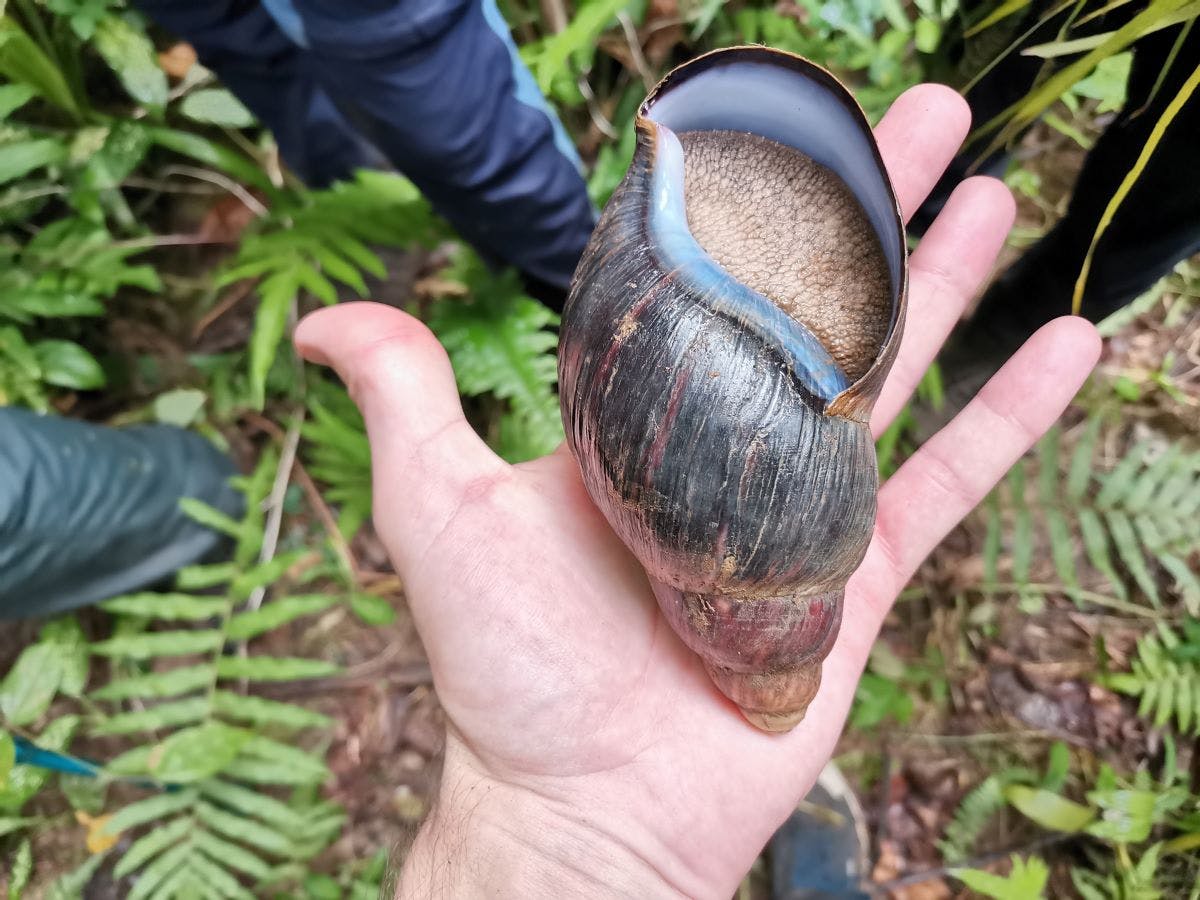
Conservation centre
One of the key parts of the project was to support the maintenance of a conservation centre for the species at Jardim Botânico do Bom Sucesso on São Tomé Island. By monitoring growth and reproduction the centre serves as a way to learn more about the biology of the species. The goal is to help guide future conservation and captive reproduction efforts. The centre also serves as a way to spread awareness about the species and its main threats as it is easily accessible at the botanical gardens. Mossy Earth members have helped to support the staff time and materials needed to run this small conservation centre for 6 months. A lot of work had been put into getting the facilities up and running and this helped ensure the continuity of these efforts.
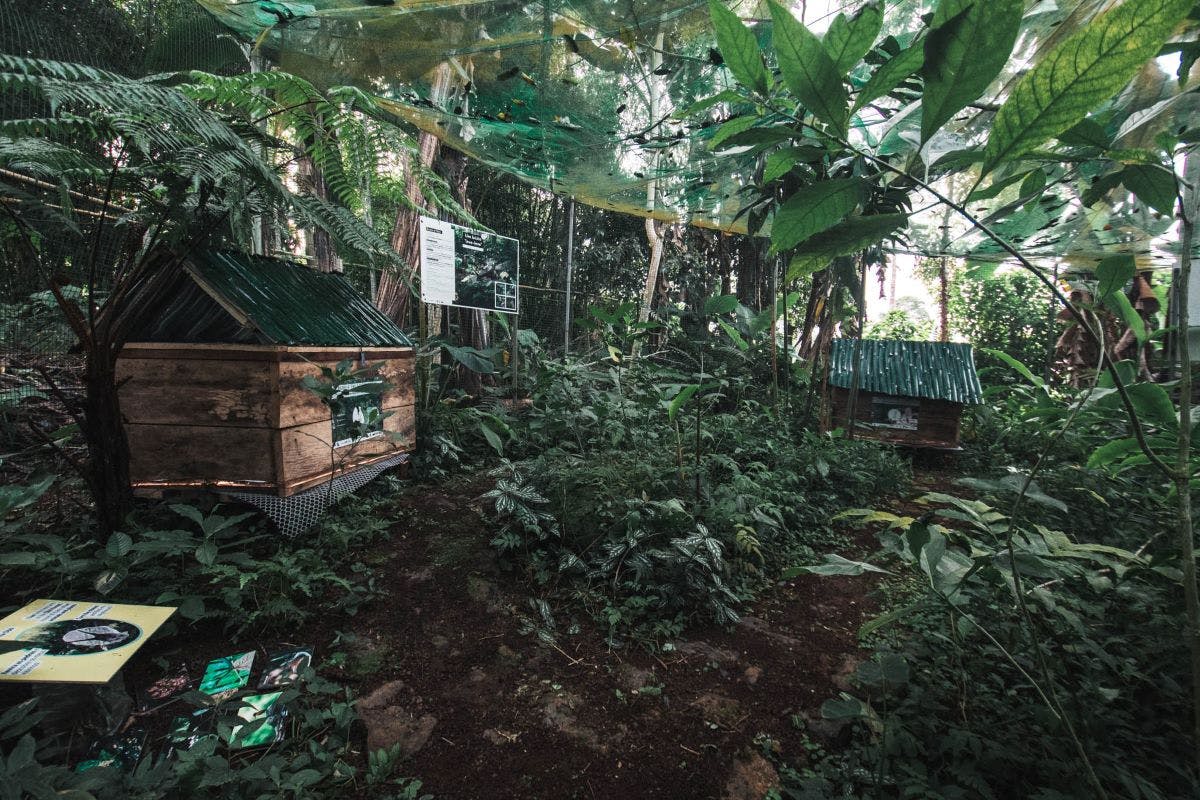
Field surveys
One of the challenges of protecting these snails is uncertainty around the threats they are facing and how populations are doing. This is especially true for the more remote and pristine parts of the forest which is increasingly becoming the place where you can still find them sliming about. Any misunderstanding of the situation in these areas could lead to conservations decisions that are ineffective. To address this knowledge gap, the more remote areas of Parque Natural do Principe are being surveyed. The forest is explored through systematic transects where the team monitors for the presence of snails and assesses the extent of threats including:
- Evidence of snail harvesting
- Presence of nonnative mammals (wild pigs, rats, cats, dogs, genets, monkeys)
- Presence of the non-native West African giant snail (Archachatina marginata)
- Deforestation activities
The team also look for evidence of disease in the individuals they find and collect samples of affected individuals to be sent for lab examination.
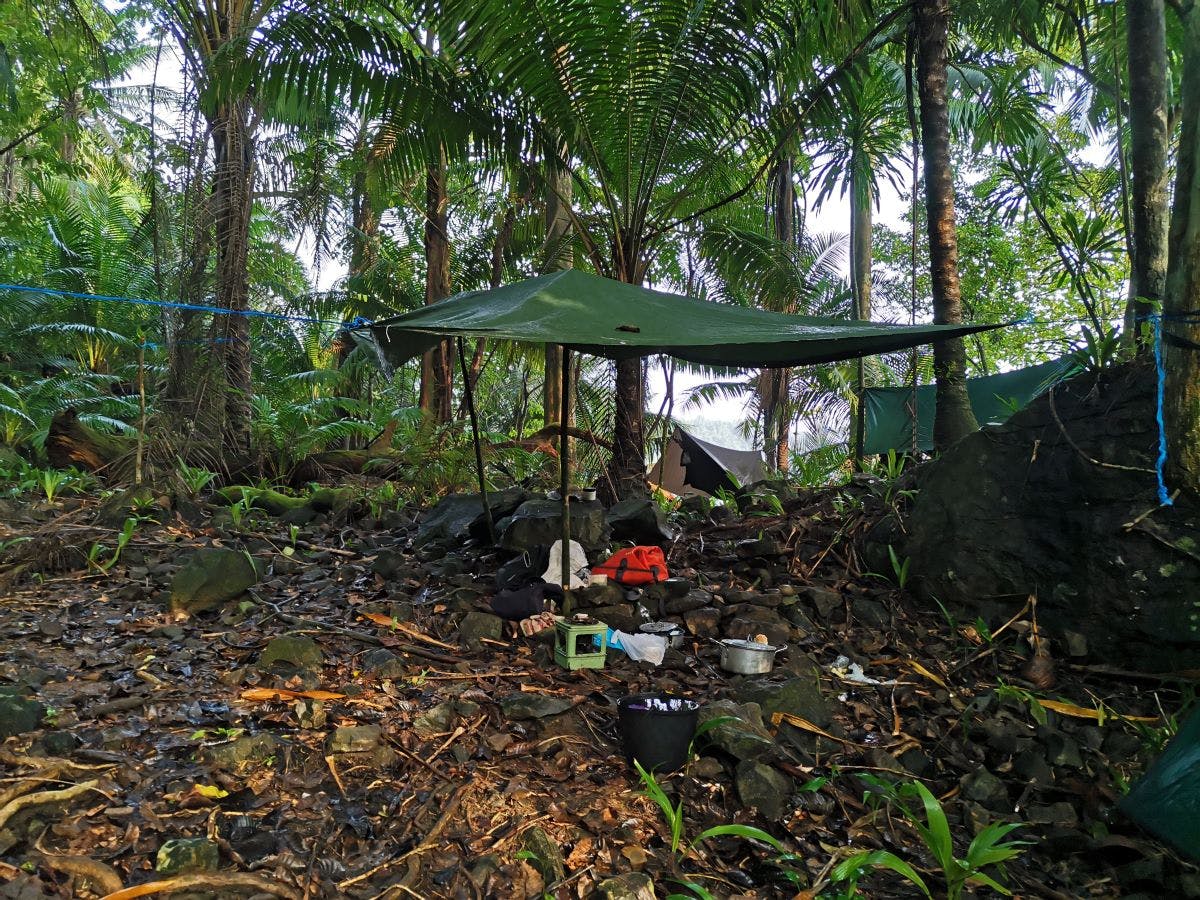
Conservation genetics
The last part of the project involves gathering and processing genetic information to help determine conservation priorities. Small non-lethal tissue samples were taken from 70 individuals between 2018 and 2021. Genetic material (DNA) was extracted from each sample and sequenced, providing us with a lot of genetic information about individuals sampled from different locations. By processing this data we hope to obtain a better understanding of the migration history of the Obô giant snail across the two islands. The data can also tell us about what areas harbour the most genetic diversity and help us understand if there are barriers between different populations that are isolating them from each other.
As is often done with other species, these insights can then be used to establish conservation priorities. This information may, for example, help us understand how best to preserve genetic diversity which is important for ensuring the species can continue thriving as its environment changes.

Learn more about the context behind this project
The forests of São Tomé and Príncipe
São Tomé and Príncipe is an archipelago nation located just above the equator and off the west African coast. Its tropical rainforests are among the most biodiverse and threatened in the world and this is true not only for the birds, reptiles, amphibians, and plants but also for the smaller and more slimy terrestrial molluscs that can go unnoticed. The islands are home to about 86 species of land snail and slug, 64% of which are found nowhere else on the planet.
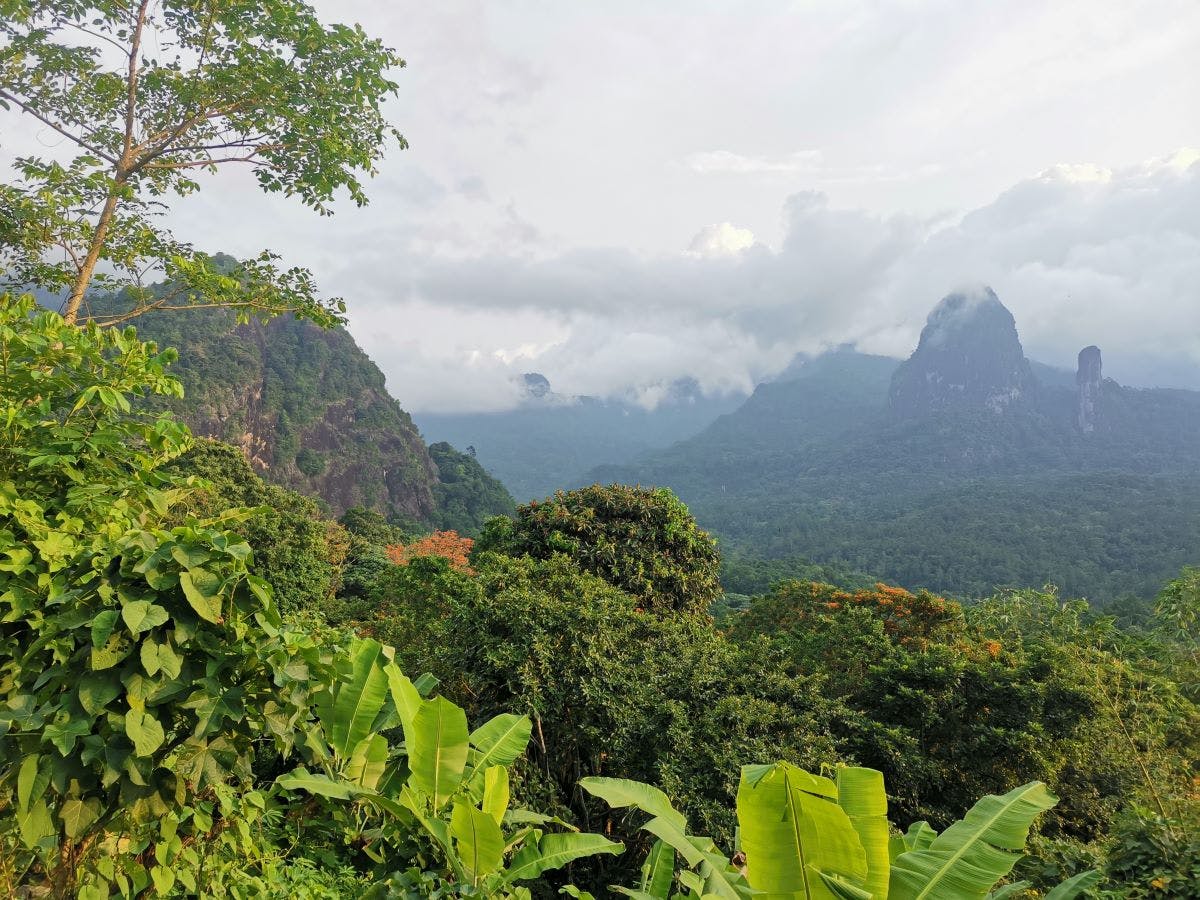
Worrying declines for the Obô Giant Snail
Although we do not know how many snails there are left in the wild, we have enough data to know that there are real causes for concern. Based on interviews with local people and field observation, the range of the Obô giant snail is estimated to have declined by 40% on the island of Principe and 50% on the island of São Tomé. The species conservation was last assessed in 1996 and was then listed as Vulnerable. Its status is currently under revision based on the latest data and it is likely to be updated to Endangered.
One of the threats for the species is the probable occurrence of a mysterious disease that has spread across wild and ex-situ populations and affected the species’ survival. Forest loss and degradation are reducing the amount of suitable habitat for the species while creating good conditions for the establishment of the invasive West African giant land snail, which was also implied in the decline of the Obô giant snail. Over-harvesting can reduce numbers even further in some places. Finally, non-native mammals such as wild pigs, rats, cats, dogs, genets and monkeys may be feeding on the species although further data is needed to understand the extent of this threat.
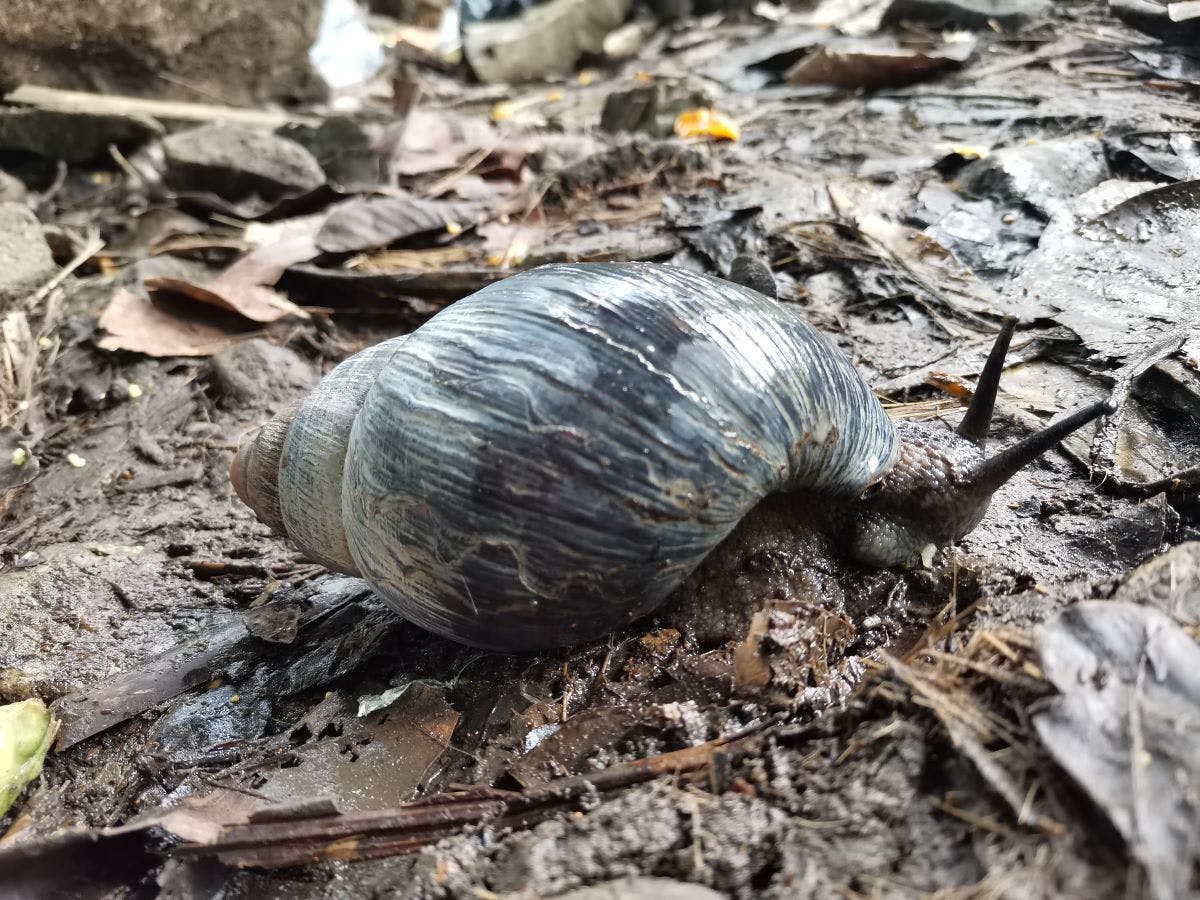
Do snails matter?
Although many people feel sad and worried about the news that we are at the start of a human induced mass extinction, few have a clear picture of what species we are actually losing. If you look at all the recorded animal extinctions since the year 1500 you will find that 40% of them are land or freshwater snail species and most have occurred on oceanic islands. We find this astonishing and alarming!
Two main factors are thought to explain this:
1. Many oceanic snail species have very narrow ranges and even small amounts of habitat loss or degradation can tip them to extinction.
2. Most of these species had evolved under low predation pressure so were susceptible to being wiped out by invasive species for which they had evolved no defense mechanisms.
Although snails may not receive the same attention as charismatic birds or mammals, they are unique and have their own evolutionary history and adaptations that are worth protecting.
Land snails are also valuable for a few other reasons. By feeding on dead vegetation they help with nutrient cycling and maintaining soil fertility and they also provide food for other small animals. Some species are fairly sensitive to habitat degradation so can be useful as bioindicator species serving as an early warning system for the ecosystem.
Finally, because of their limited dispersal ability and high species diversity they are a great study subject to understand:
1. how evolution happens,
2. how species emerge and,
3. how they are lost to extinction.
Snails can also be identified from their shells after death and in the fossil record making them particularly suitable subjects for this interesting and consequential area of research
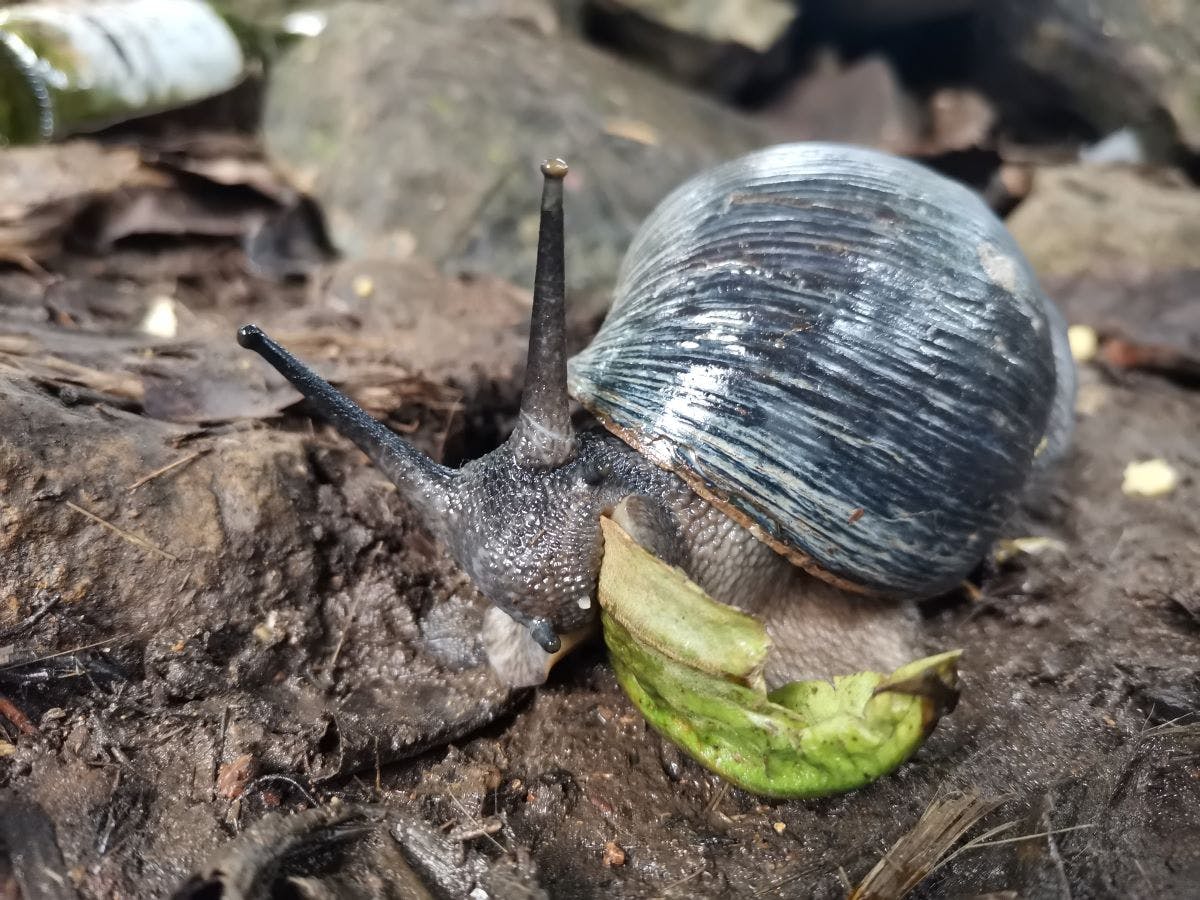
Our Partners
For this project Mossy Earth members have funded the actions that were identified as being a priority in the Obô Giant Snail single species action plan. This is a document that is created following a protocol established by the IUCN that aims to assess what conservation actions have the highest priority based on including all relevant voices in the process. With the support of our members we are translating this plan into action and helping to ensure these gentle giants will keep roaming the Forests of Sao Tomé and Principe well into the future.
To implement these activities we rely on our partner for this project: Fundação Principe, Forest Giants Project, Alisei Onlus NGO, Faculty of Science of the University of Lisbon (Centre for Ecology, Evolution and Environmental Changes – cE3c; Computational Biology and Population Genomics – CoBiG2).

Sources & further reading

- “Single species action plan for the conservation of the Obô Giant Snail Archachatina bicarinata, 2021-2025” - Panisi, M., Sinclair, F. & Santos, Y.
- “Rapid decline of the endemic giant land snail Archachatina bicarinata on the island of Príncipe, Gulf of Guinea.” - Martin Dallimer and Martim Melo